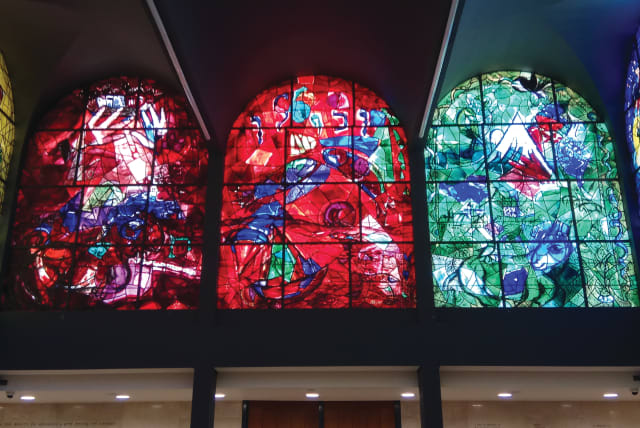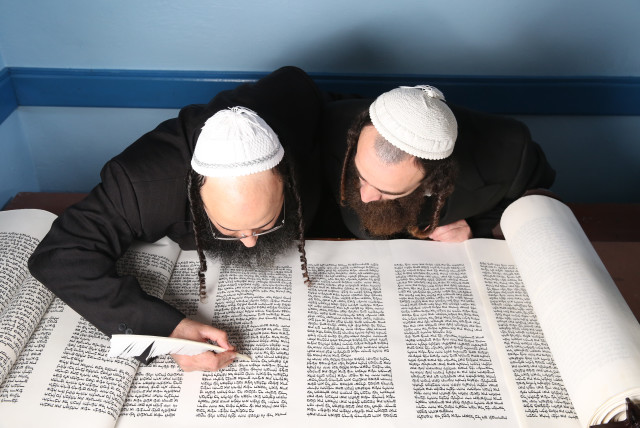Parashat Tetzaveh: To rule or to serve?

The more we remember that the role of a teacher, educator, and public figure is not to rule but rather to serve, the better we will fulfill our roles faithfully and successfully.
The Torah portion of Tetzaveh is a direct continuation of the previous parsha, Terumah. These two portions deal with the preparations necessary for the work in the Mishkan, the Tabernacle – the temporary sanctuary that accompanied the Children of Israel during their wanderings in the desert until the construction of the permanent Temple in Jerusalem. However, while Terumah deals with the structure of the Tabernacle itself and the vessels placed within it, outlining a precise plan for them, Tetzaveh primarily deals with the preparation of the individuals intended to work in the Tabernacle and operate it – Aaron the priest and his sons.
This preparation focuses on two areas, one of which is related to the special garments of the priests. These garments are required to be made from specific fabrics, particularly the garments of the high priest, which were made “for honor and for beauty.” The second area in which the preparation of the priests is expressed is during the seven days of milu’im, in which Aaron and his sons practiced the work in the Tabernacle.
Among the details of the garments of the high priest are several precious stones set within them. On his chest, the high priest wears the hoshen, an ornament adorned with precious stones on which the names of the twelve tribes of Israel are engraved: Reuben, Simeon, Levi, Judah, Issachar, Zebulun, Dan, Naphtali, Gad, Asher, Joseph, and Benjamin. Each stone bears the name of one of the tribes of Israel, making a total of 12 stones. In addition, on his shoulders, the high priest wears two more stones, each of which is engraved with the names of six tribes.
Why were the names of the tribes of Israel engraved on the garments of the high priest? The Torah addresses this question. Regarding the stones that Aaron wears on his chest, it is said:
“Thus shall Aaron carry the names of the sons of Israel in the hoshen of judgment over his heart when he enters the Holy, as a remembrance before the Lord at all times” (Exodus 28:29).
And concerning the two stones on his shoulders, a similar reason is given:
“…And Aaron shall carry their names before the Lord upon his two shoulders as a remembrance” (Exodus 28:12).
The high priest bears the memory of the Children of Israel before the Lord in two places on his body: on his heart and on his shoulders, so that the Children of Israel will be “as a remembrance.”
The meaning of remembrance
INTERPRETATIONS REGARDING the meaning of this “remembrance” vary among commentators. Many understood that the purpose was for the priest to remember the Children of Israel before the Lord. However, other commentators, such as the Ralbag (Provence, 1288-1344) and Don Isaac Abarbanel (Portugal and Spain, 1437-1509), explained that engraving the names on the stones is done for the high priest himself, so that he will always remember that he is serving in the Temple on behalf of the people.
The role of the priesthood is a delicate one. On the one hand, the priest, as a representative and delegate of the entire nation, is responsible for the rituals in the Temple. On the other hand, this role can lead to arrogance, domination, and even corruption. In later generations, we find priests who exploited their status and role dishonestly for personal gains. This is recounted in the Book of Samuel about the sons of Eli the Priest – Hophni and Phineas – who behaved dishonestly with the men and women who came to the Tabernacle in Shiloh.
The high priest, who always bears the names of the Children of Israel on his shoulders and his heart, is required to remember at all times that he does not serve in the Temple because of extra privileges granted to him. The priest serves the people by working before the Lord.
It is not only the priest who is forbidden to dominate over the people. Every leader and public figure is required to remember that he is not above the others but, on the contrary, is serving them.
This is illustrated in the Babylonian Talmud (Tractate Horayot, page 10) about the sages Rabbi Elazar Chisma and Rabbi Yohanan ben Gudgada, who were poor. Rabban Gamliel appointed them to a position in his study house so that they could support themselves. But the two sages continued to sit in the back rows of the study house. When Rabban Gamliel saw this, he reprimanded them: “Are you assuming that I am giving you authority? I am giving you servitude!”
The more we remember that the role of a teacher, educator, and public figure is not to rule but rather to serve, the better we will fulfill our roles faithfully and successfully.■
The writer is rabbi of the Western Wall and the Holy Sites.
Jerusalem Post Store
`; document.getElementById("linkPremium").innerHTML = cont; var divWithLink = document.getElementById("premium-link"); if (divWithLink !== null && divWithLink !== 'undefined') { divWithLink.style.border = "solid 1px #cb0f3e"; divWithLink.style.textAlign = "center"; divWithLink.style.marginBottom = "15px"; divWithLink.style.marginTop = "15px"; divWithLink.style.width = "100%"; divWithLink.style.backgroundColor = "#122952"; divWithLink.style.color = "#ffffff"; divWithLink.style.lineHeight = "1.5"; } } (function (v, i) { });

